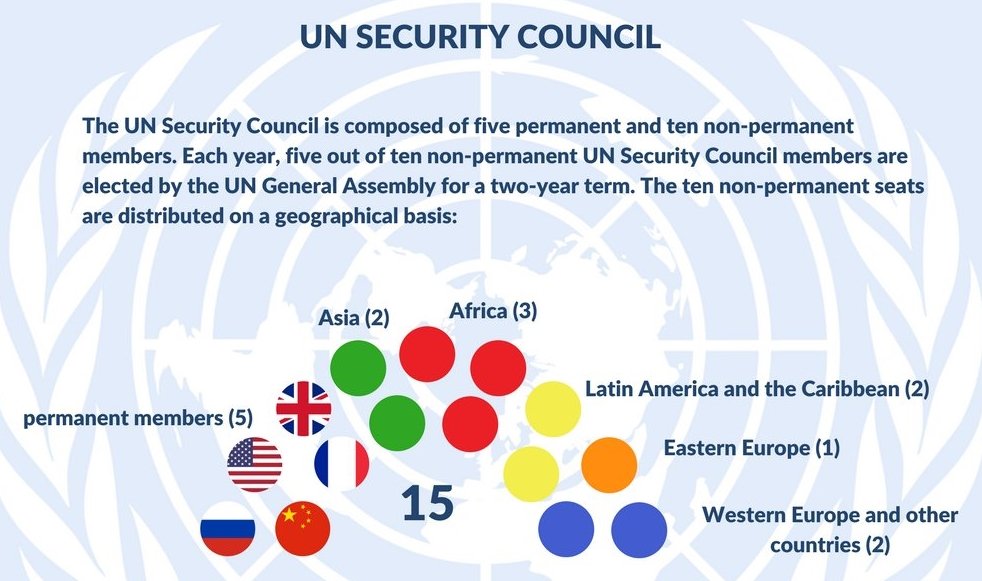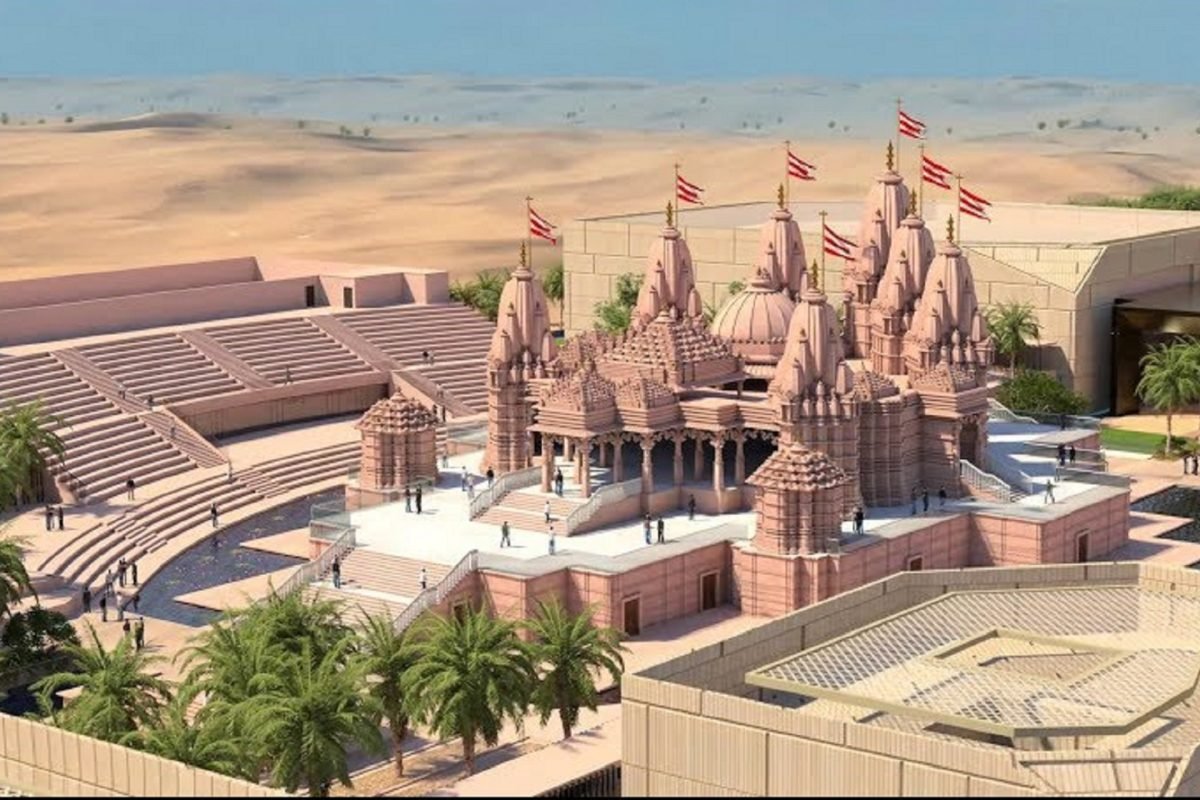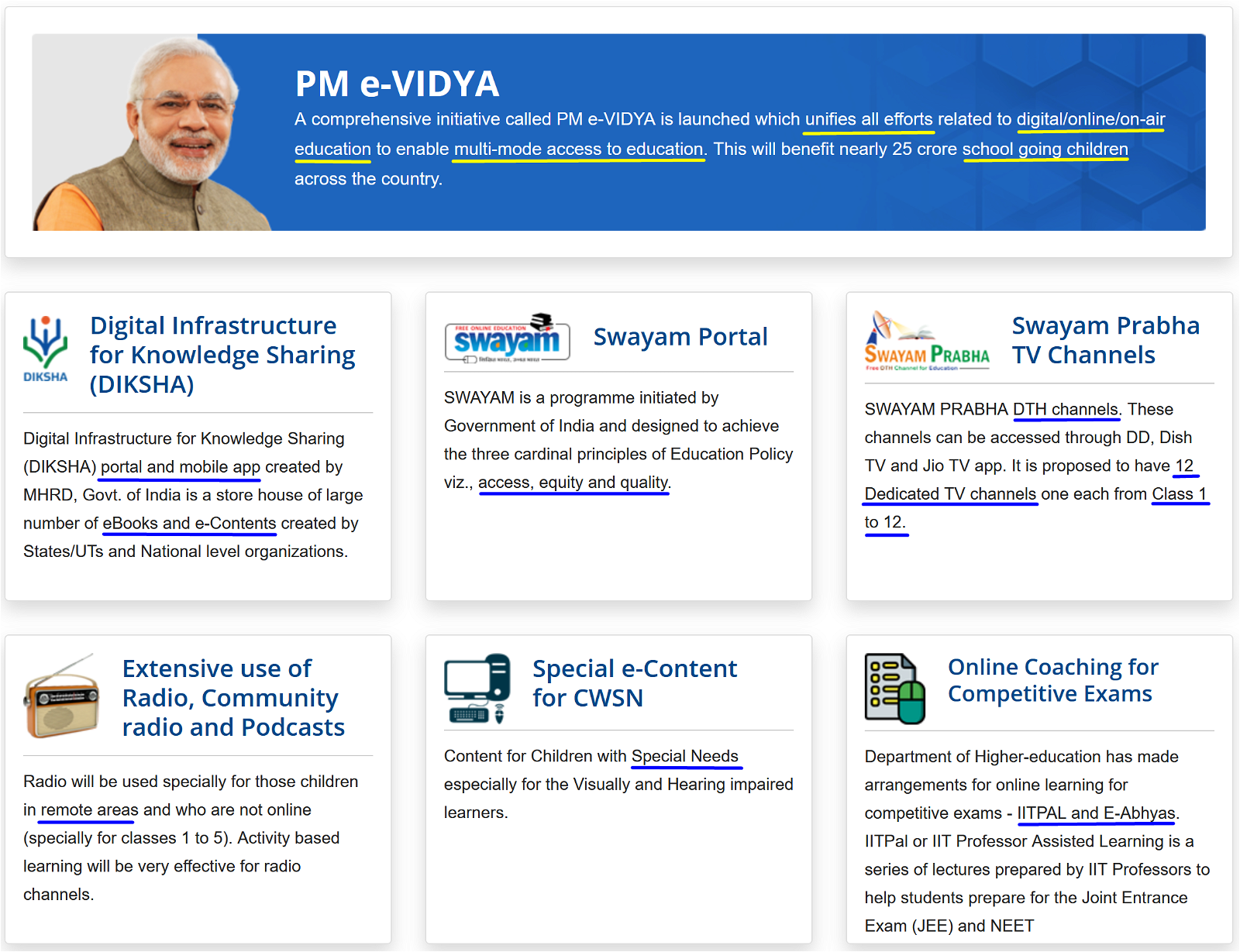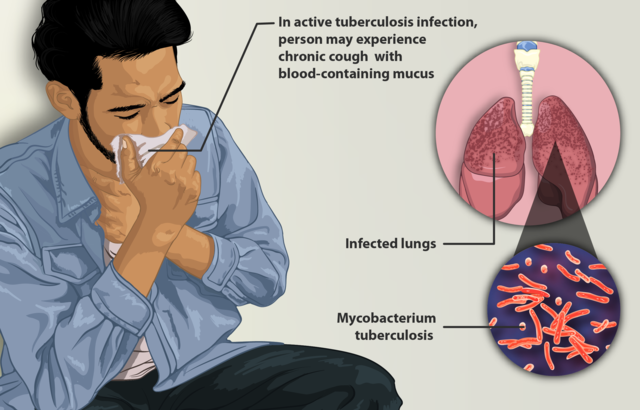
Current Affairs for UPSC Civil Services Exam – April 13, 2024
Subscribers of "Current Affairs" course can Download Daily Current Affairs in PDF/DOC
Subscribe to Never Miss an Important Update! Assured Discounts on New Products!
Must Join PMF IAS Telegram Channel & PMF IAS History Telegram Channel
{GS1 – A&C – Festivals} India celebrates New Year Festivals
- Context (PIB): The President greeted all Indians on Vaisakhi, Vishu, Bishub, Bahag Bihu, Poila Boishakh, Vaishakhadi and Puthandu.
- Vikram Samvat 2081 started on April 9, 2024, and was celebrated as Solar New Year in India.
- Mythologically, Goddess Ganga descended to Earth on this day; thus, people take holy dips in rivers like the Ganges, Jhelum, and Kaveri.
Vaisakhi (Baisakhi)
- Mainly celebrated in Punjab, Haryana and Chandigarh among Sikhs.
- Khalsa Panth was formed on the same in 1699 by Guru Gobind Singh.
- Worship of agricultural machinery (Aawat pauni) is done before the harvest.
- Baisakhi is a harvest festival and the start of the new agricultural year.
- Baisakhi is associated with the Vaisakha festival, celebrated as the solar new year.
Vishu
- It is observed as Malayalam New Year on the first day of the Malayalam month of Medam.
- It is celebrated in the southern states of Kerala, Karnataka and Tamil Nadu.
- This festival also marks the beginning of the astronomical year.
- Vishnu and Krishna are worshipped to signify Krishna’s victory over the asura-king Narakasura.
- The term ‘Vishu’ originates from the Sanskrit word ‘Viuvam,’ translating to ‘equal,’ symbolising the balance between day and night during the spring equinox.
Pana Sankranti (Bishub)
- Traditional New Year in Odisha, India.
- It is celebrated on the first day of the traditional solar month of Meṣa.
Bahag Bihu (Rongali Bihu/Xaat Bihu)
- The onset of “Bohag” (Assamese calendar) marks the beginning of the Assamese New Year.
Poila Boishakh (Pohela Boishakh)
- Bengali New Year is a significant cultural festival in Bangladesh and West Bengal.
- The festival originated during the Mughal Empire as a harvest festival.
- It gained significance during the Bengali Renaissance in the late 19th and early 20th centuries when cultural icons like Rabindranath Tagore and Kazi Nazrul Islam incorporated it into their works.
Vaishakhadi (Mesadi)
- It is celebrated as a harvest festival in Maharashtra and Karnataka.
- Procession of the village deity in a palanquin is the highlight of the festival.
Puthandu
- It is celebrated as Tamil New Year on the first day of the first Tamil month, Chittirai.
Ugadi (Yugadi)
- It is celebrated as the “New Year” in Telugu and Kannadigas.
- It derives its name from the Sanskrit word Yugadi. “Yuga” means “age”, and “Adi” means “beginning.” So, Yugadi means the beginning of a new year.
- The day is observed by drawing colourful patterns on the floor called Muggulu/Rangoli.
- A special food called Pachadi is prepared and shared.
{GS2 – Governance – Laws} Prevention of Money Laundering Act
- Context (TH | IE): The SC has recently endorsed the sweeping powers of the Enforcement Directorate (ED) under the Prevention of Money Laundering Act (PMLA).
- The PMLA, 2002 has been scrutinised for including certain offences that are not directly aimed at combating money laundering.
- Recently, the Delhi Court slammed the ED for a faulty PMLA probe and said the ED must introspect steps to ensure expeditious and fair investigations.
PMLA, 2002
About
- The PMLA, 2002 is an Act of the Parliament of India enacted to prevent money laundering and provide for the confiscation of property derived from money laundering.
- It aims to combat money laundering related to illegal activities such as drug trafficking, smuggling, and terrorism financing.
- India’s Parliament enacted the PMLA under Article 253 of the IC, which empowered it to make laws for implementing international conventions.
- This Article indicates that a law Parliament makes to implement any decision of an international body will be confined to the subject matter of that decision.
- Item 13 in the Union list of the Seventh Schedule of the IC is specific on this point.
Background
|
Objectives of PMLA
- Prevention: To prevent money laundering by implementing stringent measures and monitoring financial transactions.
- Detection: To detect and investigate instances of money laundering through proper enforcement and regulatory mechanisms.
- Confiscation: To confiscate properties derived from money laundering activities to deter offenders and disrupt illicit financial flows.
- International Cooperation: To facilitate international cooperation in combating money laundering and terrorist financing activities.
Key Provisions of PMLA
- Definition of money laundering: Section 3 defines money laundering as any attempt, assistance, or involvement in processes connected to the proceeds of crime to project it as untainted property.
- Offences and Penalties: Section 4 underlines punishment for money laundering.
- The offence of money laundering shall be punishable with rigorous imprisonment for a term not less than three years extending to seven years and shall also be liable to a fine.
- Attachment and Confiscation of Property: It allows for the attachment and confiscation of property involved in money laundering.
- It provides for the establishment of an Adjudicating Authority to oversee these proceedings.
- Reporting Requirements: It mandates entities, such as banks and financial institutions, to maintain records of transactions and report suspicious transactions to the Financial Intelligence Unit (FIU).
Agencies’ powers under the Act
- The ED in the Department of Revenue, Ministry of Finance, is responsible for investigating money laundering and property attachment offences.
- The Financial Intelligence Unit-India (FIU-IND), under the Department of Revenue, is the central agency responsible for receiving, processing, analysing, and disseminating information relating to suspect financial transactions.
- The scheduled offences are separately investigated by the agencies mentioned under respective acts.
- Example, the local police, CBI, customs departments, SEBI, or any other investigative agency, as the case may be.
Obligations under the Act
- Imposes obligations on banking companies, financial institutions, and intermediaries to verify and maintain client identity records.
- These financial firms are required to report their financial transactions to the Financial Intelligence Unit-India (FIU-IND).
Setting up of Authority
- PMLA envisages setting up an Adjudicating Authority to exercise the jurisdiction, power, and authority conferred by it.
- Under PMLA, an adjudicating authority determines within 180 days whether the properties attached by ED are involved in money laundering.
- The GoI appoints the Adjudicating authority.
- It also envisages setting up an Appellate Tribunal to hear appeals against the orders of the Adjudicating Authority and authorities like Director FIU-IND.
Special Courts under PMLA
- One or more courts of sessions are designated as Special Courts to try offences under PMLA and other related offences.
Amendments to PMLA, 2002
Amendments in 2009, 2012 and 2023
- The 2009 and 2012 amendments to PMLA gave the ED the power to take coercive action against politicians.
- In 2009, ‘Criminal conspiracy’ under (Section 120B) of the Indian Penal Code (IPC) was added to the PMLA’s schedule, among various other offences.
- This allowed the ED to enter any case where a conspiracy is alleged, even if the principal offence is not part of the PMLA’s schedule.
- For example, this helped ED to build its land-grabbing case against former Jharkhand CM, who is currently in Ranchi jail.
- This allowed the ED to enter any case where a conspiracy is alleged, even if the principal offence is not part of the PMLA’s schedule.
- In 2009, the ED also got international jurisdiction as far as tracking laundered money was concerned.
- In 2012, the PMLA was amended to move the Prevention of Corruption Act 1988 (PC Act) from Part B to Part A of the statute’s schedule.
- This applied stringent bail conditions on those accused of corruption. etc
- Part A of the statute covered offences such as waging war against the nation, trafficking in drugs, the PC Act, the Wildlife (Protection) Act, and the Immoral Traffic (Prevention) Act.
- In 2009, ‘Criminal conspiracy’ under (Section 120B) of the Indian Penal Code (IPC) was added to the PMLA’s schedule, among various other offences.
- To plug loopholes ahead of India’s proposed assessment under the Financial Action Task Force (FATF), specific changes in the PMLA,2002 were introduced in 2023-
- Defining “politically exposed persons” (PEPs) as individuals who have been entrusted with prominent public functions by a foreign country.
- This was in uniformity with a 2008 RBI circular for Know Your Customer (KYC) norms and anti-money laundering standards for banks and financial institutions.
- The government widened the list of non-banking reporting entities to allow 22 financial entities, like Amazon Pay (India) Pvt. Ltd., to verify the identity of their customers via Aadhaar under money laundering law.
- Defining “politically exposed persons” (PEPs) as individuals who have been entrusted with prominent public functions by a foreign country.
Concerns regarding the PMLA Act
Inclusion of minor and less serious offences
- Inclusion of other less serious offences in the schedule dilutes the original intent of the law.
Equates punishment for ordinary crimes with serious crimes
- PMLA equates the punishment under an ordinary crime with a severe economic offence.
- For example, with the addition of the PC Act, 1988 to the schedule of offences, PMLA applies with all its rigour to public servants.
- Thus, a public servant charged with corruption and a hard-core drug trafficker are treated alike.
Broad Definition of ‘Proceeds of Crime’
- The broad definition of ‘proceeds of crime’ provides considerable discretion to the authorities.
- The investigating authorities can misuse this discretion in determining the ‘proceeds of crime’.
Stringent Bail Conditions
- The courts deny bail to the accused because the bail provision under PMLA states that a judge can grant bail only when he is satisfied that the accused is innocent.
- This is against the Anglo-Saxon jurisprudence, which presumes a person is innocent until proven guilty.
Burden of Proof of innocence on the accused
- The burden of proof of innocence on the accused presents a prominent challenge in ensuring a free and fair trial.
Against the Federal principles and Basic structure Doctrine
- Under the PMLA, the ED can investigate without the prior consent of the concerned State.
- This is unlike other central police organisations (like the CBI), which are required to obtain the state’s consent before carrying out any policing or investigating activity.
Violation of the Fundamental Rights of Accused
- Violation of Article 21– Under PMLA, the ED does not require disclosing the details of the Enforcement Case Information Report (ECIR), which contains the allegations against the accused person.
- It is against the FR of the accused to be informed of the charges and allegations, which is a universally recognised right and is part of the right to life and liberty under Article 21 of the IC.
- Violation of Article 14– Equating the punishment of accused of minor crimes and serious economic offences is a violation of the fundamental right to equality under Article 14 of the constitution.
- Violation of Article 20(3)—The authority’s power to issue summons to ‘any person’ (including the accused) to give evidence or produce records during an investigation violates the right against self-incrimination, which is a fundamental right under Article 20(3) of the IC.
Extensive powers to the authorities
- The Act grants the Enforcement Directorate (ED) extensive powers of summons, arrest, and raids. This excessive power to the authorities can potentially lead to its misuse and overreach.
What is Money Laundering?
About
- Money laundering is a process used by individuals and organisations to conceal the origins of illegally obtained money.
- It involves making illicit funds appear legitimate through a series of transactions.
Stages of Money Laundering
- Placement is the stage where illicit funds are introduced into the financial system.
- This can involve deposits into bank accounts, currency exchanges, or purchases of valuable assets.
- Layering is the process of separating illicit funds from their source.
- This often involves transferring funds between accounts or across borders to obscure their origin.
- Integration is the final stage in which the laundered funds are reintroduced into the economy as legitimate funds.
- This involves investing in businesses, purchasing real estate, or other means of legitimising the funds.

Methods of Money Laundering
- Structuring (Smurfing): Breaking up large amounts of cash into smaller, less conspicuous amounts that are then deposited into bank accounts.
- Trade-Based Laundering: Using trade transactions to move value across borders and disguise the origins of illicit funds.
- Shell Companies: Creating companies with no legitimate business activity to funnel illicit funds through legitimate-looking transactions.
- Real Estate: Purchasing real estate with illicit funds and then selling it to convert the value into legitimate assets.
{GS2 – IR – India-Mauritius} India Amends DTAA with Mauritius
- Context (IE): India amended its Double Taxation Avoidance Agreement (DTAA) with Mauritius to prevent tax evasion or avoidance.
- The amendment to the India-Mauritius treaty was signed on March 7 in Port Louis and was made public recently.
- The DTAA was a significant factor for many foreign portfolio investors (FPI) and foreign entities to invest in India via Mauritius.
- The recent amendment reflects India’s alignment with global efforts against treaty abuse, particularly under the BEPS framework.
Amendments to the DTAA
Principal Purpose Test
- The amendment includes the Principal Purpose Test (PPT) to prevent abuse of the treaty for obtaining tax benefits.
- The PPT stipulates that treaty benefits will not apply if obtaining those benefits is the main purpose of a transaction or arrangement.
- The PPT will deny treaty benefits, such as reduced withholding tax on interest, royalties, and dividends, if obtaining those benefits was a primary purpose of the transaction.
- The amendment aims to curb tax treaty abuse and minimise avenues for tax avoidance or mitigation by integrating PPT into the treaty.
Concerns
- However, experts anticipate a potential increase in litigation as investors from Mauritius will now need to prove the commercial rationale behind their transactions.
- They must demonstrate that the primary objective was not to obtain treaty benefits.
- It’s uncertain whether this amendment will apply to grandfathered investments, and ongoing litigation concerning beneficial ownership and substance regarding Indian investments is already prevalent.
|
Lack of clarity
- Until 2016, Mauritius was favoured for investments in India due to the non-taxability of capital gains from selling shares in Indian companies.
- The treaty was last amended in May 2016 to allow taxation of capital gains from shares of Indian companies acquired by Mauritian tax residents, exempting investments made until March 31, 2017.
- However, the recent amendment does not clarify whether past investments will be exempt. The Ministry of Finance has yet to issue clarification on this matter.
Greater emphasis on tax avoidance and evasion
- The two nations have amended the preamble of the treaty to emphasise on tax avoidance and evasion.
- The previous objective of ‘mutual trade and investment‘ has been replaced with a focus on “eliminating double taxation” without allowing opportunities for non-taxation or reduced taxation through tax evasion or avoidance.
- This includes preventing “treaty shopping arrangements” aimed at obtaining treaty benefits for the indirect benefit of residents of third jurisdictions.
- This change means that any cross-border investment structured through Mauritius should consider the impact of BEPS MLI (Multilateral Convention to Implement Tax Treaty Related Measures to Prevent Base Erosion and Profit Shifting).
- India ratified the BEPS MLI in 2017.
- This amendment applies to all types of income, including capital gains, dividends, and fees for technical services.
|
{GS2 – Polity – IC – Judiciary} Curative Writ Petition
- Context (IE I IE): The SC ruled that the Delhi Metro Rail Corporation (DMRC) will not have to pay nearly Rs 8,000 crore to the Delhi Airport Metro Express Private Limited (DAMEPL)
- The ruling has overturned the SC’s September 2021 judgment that upheld the arbitral award.
- The court had earlier dismissed a review petition seeking a review of the arbitral decision in 2021.
- The court has now exercised its “extraordinary powers” in a curative writ petition to correct a “fundamental error” in its judgment.
- This is the first time that the court has used its curative jurisdiction in a commercial case.
Curative jurisdiction
Constitutional Background
- The curative petition concept is supported by Article 137 of the Indian Constitution.
- It provides that the SC has the power to review any judgement (or order) it pronounces in the matter of laws and rules made under Article 145.
- Such a petition needs to be filed within 30 days from the date of judgment or order.
- The IC, however, does not prescribe a curative writ petition as a means of appealing an SC decision.
- It is a judicial innovation designed for correcting “grave injustices” in a ruling of the SC.
Procedure
- A curative petition may be filed after a review plea against the final conviction is dismissed.
- Curative writs are rarely used.
- Primarily, procedural grounds permit the filing of a curative writ.
- Curative writs are filed mostly in death penalty cases.
- As per law, if a convict is awarded a death sentence, he has three options: review petition, curative petition before the Supreme Court, and finally, mercy petition before the President.
- A claim must be made that principles of natural justice were not followed—for example, that a party was not heard, that a judge was biased, or that a judge had a conflict of interest.
Who can hear Curative Petitions?
- A curative petition must first be circulated to a Bench of the three senior-most judges and, if available, the judges who passed the judgment.
- The matter should be listed before the same bench only when a majority of the judges conclude that it needs a hearing.
- The Bench can ask a senior counsel to assist it as amicus curiae (Friend of the court) at any stage of the curative petition’s consideration.
- A curative petition is usually decided by judges in the chamber unless a specific request for an open-court hearing is allowed.
- These petitions need to be approved by a senior advocate designated by the court.
- The SC in the Yakub Memon case (2015) and the Delhi gang rape convicts case (2020) dismissed curative writs challenging death sentences.
- In 2023, in the Bhopal gas tragedy case, the SC refused to exercise its curative powers to enhance the compensation provided to victims that was deemed grossly inadequate.
- In the event of the Bench holding at any stage that the petition is without any merit and vexatious, it may impose exemplary costs on the petitioner.
Rupa Ashok Hurra vs Ashok Hurra (2002)
- The SC first articulated the concept of a curative writ in this case.
- If there was a significant miscarriage of justice due to a final decision of the SC, could the court still correct it?
- On the one hand, it was the issue of finality and closure to a case, and
- On the other hand, it was the substantive question of rendering justice in its true sense.
- SC said that its “concern for rendering justice in a cause is not less important than the principle of finality of its judgment”.
Union of India v. Union Carbide (2023)
- The SC narrowed the scope of the curative jurisdiction and held that it could be entertained when there is a gross miscarriage of justice, fraud or suppression of material facts.
{GS3 – Envi – Degradation} Chital: Invasive Species of Ross Island
- Context (IE): Studies conducted over the past two decades have highlighted the harmful effects of chital on the Andaman Islands’ native flora and fauna.
- The Andaman and Nicobar Islands administration seeks help from the Wildlife Institute of India to manage the chital population in Ross Island.
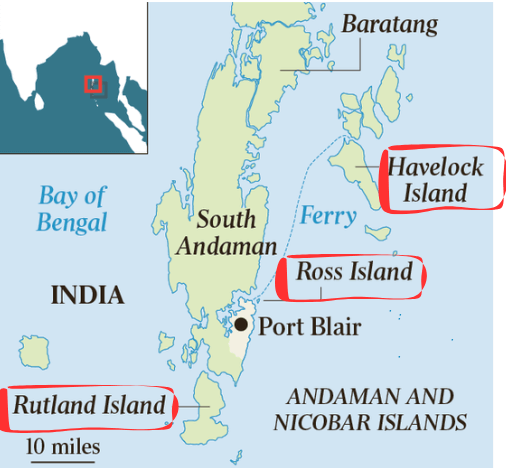
Background
- Chital, also known as spotted deer, are originally from mainland India and were introduced to Ross Island by the British in the early 20th century.
- With no natural predators or competitors, chital rapidly multiplied and spread across the Andamans.
- This raises concerns about invasive species and their threat to endemic ecosystems.
- The proliferation of chital in the Andamans hampers the regeneration of native vegetation, as deer consume seeds and seedlings.
What are Invasive Alien Species?
- The Convention on Biological Diversity (CBD) defines invasive alien species (IAS) as those whose introduction and spread outside their natural distribution threaten biodiversity.
- IAS can include animals, plants, fungi, and even microorganisms, affecting various ecosystems.
- The CBD summarises the characteristics of IAS as “arrive, survive, and thrive.”This means they need an introduction, either naturally or by humans, to survive on native food, reproduce quickly, and outcompete native species for resources.
- In India, the Wildlife Protection Act of 1972 (amended in 2022) provides a narrower definition of invasive alien species (IAS).
- According to this definition, IAS are species of animals or plants not native to India whose introduction or spread may threaten or harm wildlife or its habitat.
- Importantly, this definition excludes species within India that may be invasive in a specific region.
- For example, the chital in the Andaman Islands are protected in mainland India but have become a problem in the island chain.
|
Impacts of IAS
- Invasive species disrupt the food chain and upset ecosystem balance.
- In habitats lacking competition, invasive species can dominate the entire ecosystem.
- For example, at Keoladeo Park in Rajasthan, an African catfish prey on waterfowl and migratory birds, affecting the UNESCO World Heritage site.
- In addition to causing significant changes to biodiversity and ecosystems, invasive species incurred a global economic cost of over $423 billion annually in 2019.
- These costs result from the damage inflicted by invasive species on natural ecosystems in various areas.
- For instance, according to India’s National Biodiversity Action Plan of 2019, the cotton mealybug is an invasive species native to North America.
- It has severely impacted cotton crops in the Deccan region, leading to substantial yield losses.
How do they Arrive?
- Exotic pet owners in India often abandon their pets in local water bodies. One such pet is the red-eared slider, a North American native turtle.
- Authorities frequently confiscate red-eared slider specimens to combat illegal wildlife trade. For example, the Customs Air Intelligence Unit seized 6,850 live red-eared sliders from two passengers at Trichy International Airport in June last year.
- Many fish species were introduced in India to meet the demand of aquarium enthusiasts. For instance, the African catfish was imported from Bangladesh specifically for aquaculture.
- Now, the African catfish have been reported in various inland systems in India, including major rivers like the Ganga, Yamuna, Sutlej, and Godavari, as well as lakes like Vembanad Lake (according to a 2019 study by the National Biodiversity Authority).
Intergovernmental Platform on Biodiversity and Ecosystem Services (IPBES)
|
{GS3 – Envi – Issues} Issues in Hill stations | Kodaikanal Hills
- Context (TH): Kodaikanal Hills are facing degradation due to rampant tourism.
- It derives its name from two Tamil words: Kodai, meaning “gift,“ and kanal, meaning “forest,“ which translates to “gift of the forest.“
- Location: Palani Hills of the Western Ghats (Dindigul, Tamil Nadu).

- It is a popular tourist destination, the “Princess of Hill stations” and a “Sky Island”
- It is a plateau at an elevation of 2225 meters, housing man-made Kodaikanal Lake at its heart.
Sky Islands
|
Issues haunting Hill stations in India
- Overcrowding: Rising temperatures in plains, revenge tourism, and easier connectivity have contributed to exceeding these destinations’ carrying capacity.
- Degradation of the fragile ecosystem: Hill Stations have high endemism and a very fragile ecosystem that is on the brink of fallout.
- Vulnerability to disasters: Disastrous landslides, avalanches, and flash floods are increasing.
- Tourism-centric development: With Multi-floor buildings, mass tourism ventures, and artificial beautification projects, the entire economy of such hill stations lacks real development.
- Unregulated tourism is amplified by narrow, winding roads up steep inclines, poor infrastructure, limited medical care, and negligible parking space.
- Water and sanitation issues: High footfall highlights other issues associated with excessive tourism, such as sewage, sanitation, and acute water shortages.
Unsustainable tourism in Kodaikanal
- Poor Waste Management System: On an average day, 20 metric tonnes of unsegregated waste is dumped at dump sites near reserve forests.
- Mushrooming of Homestays: Tamil Nadu Tourism’s 2022 guidelines for homestays and B&Bs (bed and breakfasts) have led to a surge in the Nilgiris.
- Lack of ban on plastic: Kodaikanal, unlike many other hill stations, doesn’t enforce a ban on single-use plastic, leaving behind a heap of it.
- Loss of sholas: In the last 40 years, Palani Hills, which runs through Tamil Nadu and Kerala, has lost around 80% of its grasslands and shola forests due to invasive species and deforestation caused due to agriculture and tourism.
Manjummel effect
Guna caves
|
Way forward
- Carrying capacity assessments: Quantification of the carrying capacity of fragile ecosystems is a must to estimate the ecosystem’s sustainability.
Carrying capacity in tourism
Efforts to assess Carrying capacity
|
- Restricting number of tourists: Inflow must be capped at a sustainable level, using means like e-pass.
- Responsible tourism: Tourism needs to be “responsible” and in line with the Mission LiFE, such as the Swachhata Green Leaf Rating (SGLR) initiative and Sustainable tourism plan.
{Prelims – Sci – Bio – Diseases} Mange
- Context (TH): The forest department is monitoring an outbreak of mange among a pack of Asiatic wild dogs in the Mudumalai Tiger Reserve (MTR) in the Nilgiris.
- They suspect the disease spread from the local feral dog population.
Mange
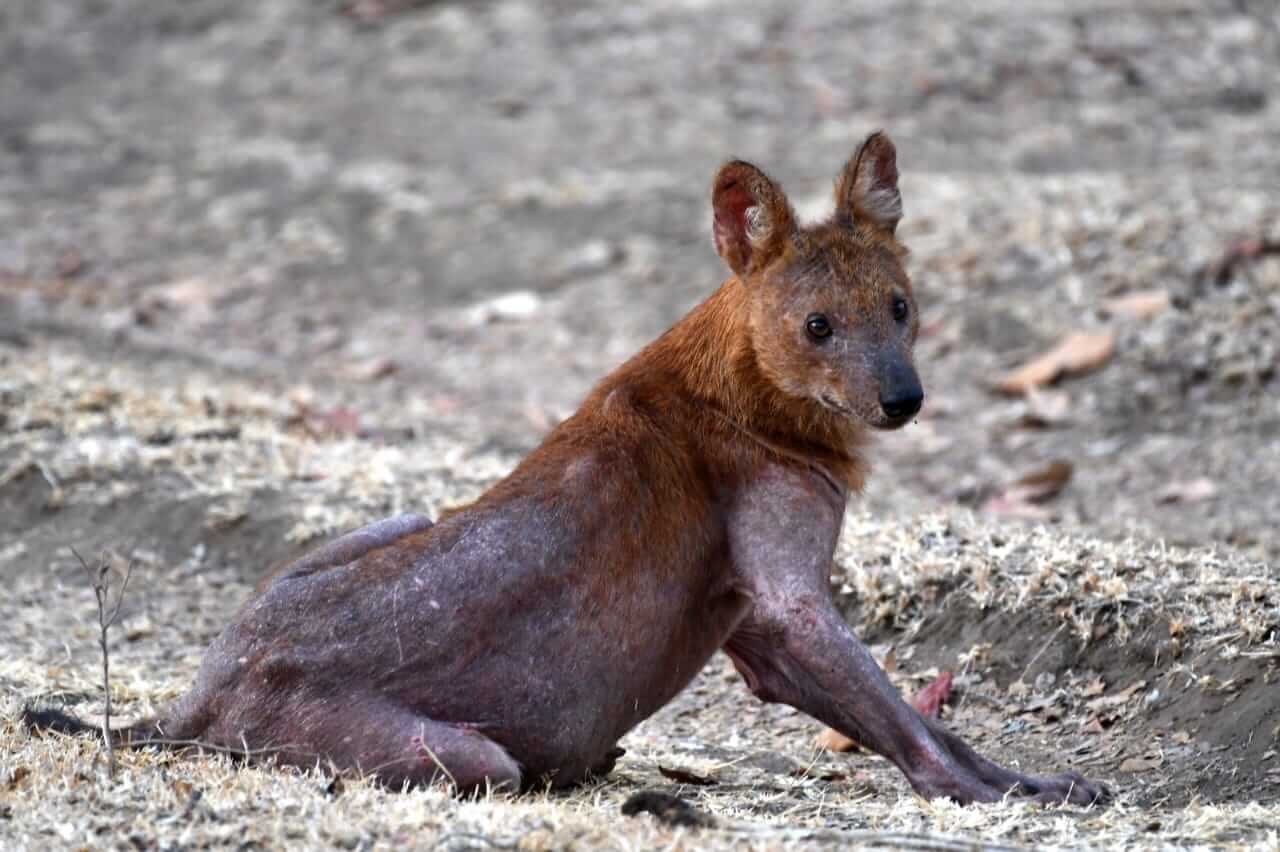
- It is a skin disease that affects mammals. It is a highly contagious infestation.
- It is caused by microscopic mites that burrow into the skin.
- It is characterised by inflammation, itching, thickening of the skin, and hair loss.
- There are different species of mites that can cause the disease.
- Sarcoptic mange can affect wild and domestic mammals and is often reported in wild canids such as red foxes, coyotes, grey wolves, and red wolves.
- They are transmitted between animals by direct contact and by objects that have been in contact with infected animals.
- Most forms of mange are treatable.





![PMF IAS Environment for UPSC 2022-23 [paperback] PMF IAS [Nov 30, 2021]…](https://pmfias.b-cdn.net/wp-content/uploads/2024/04/pmfiasenvironmentforupsc2022-23paperbackpmfiasnov302021.jpg)


